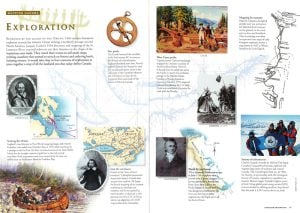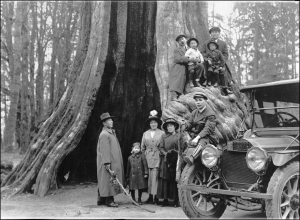
History
Throwback Thursday: A history of aerial photography
When did aerial photography first emerge, and what’s happened in the years since?
- 100 words
- 1 minutes
This article is over 5 years old and may contain outdated information.
History

Photo: Read Pierre Berton story about the rise of automobiles in a 1989 issue of Canadian Geographic.
Tons of manure had to be swept off the streets of Toronto every day in 1890. Urine and flies bothered both pedestrians and owners of the horses leaving the mess. Women had to raise their skirts as they crossed Yonge and College streets to “prevent lumps of dung from sticking to their hems,” Pierre Berton wrote in a 1989 Canadian Geographic story about the rise of automobiles.
In Berton’s story, “Wheels: The car as a cultural driving force,” the acclaimed author and historian traced the evolution of cars and what that meant for society. His conclusions, read almost 26 years after he wrote them, are similar to statements now made about the Internet and cell phones.
“We realize now that, more than any other invention, the automobile has changed our lives. It has affected the way we think, the way we act, the way we talk,” Berton wrote. “It has upended the class system, sounded the death knell of Main Street, and played hell with the Lord’s Day.”
Mainstream responses to cars evolved over the years from suspicion, to love and then concern, Berton wrote, adding critics failed to see the greatest appeal of the car was freedom. “For when all is said and done, the major appeal of the motor car, with all its faults and weaknesses, is still what it was at the turn of the century: a liberating force.”
Here’s a timeline of the automobile, mostly in Berton’s words.
1900: “(When) the automotive age can be said to have begun. That was the year when the early self-propelled vehicles began to look less like motorized buggies and more like motor cars, with a proper steering wheel instead of a tiller, a hood and a side door, and a speed that could reach a terrifying 40 miles an hour.”
1904: “To the Canadian farmer, the car was also an anathema. It scared livestock and killed poultry. ‘Is it not time something was done to stop the automobile business?’ the Newcastle, Ont. Independent asked in 1904.”
1906: “Woodrow Wilson, then president of Princeton University, termed the motor car ‘a picture of arrogant wealth’ and announced that ‘nothing has spread a socialistic feeling more than the use of the automobile’.”
1908: Henry Ford’s introduction of the Model-T with a cost of $825.
1909: “It was believed that (women) could never act with speed in an emergency or muster the strength to push in a clutch or struggle with a gear shift. These myths were shattered in 1909 when Alice Huyler Ramsay drove across the continent in a green Maxwell, without male help.”
1911: The Dunlop company developed the anti-skid tire. The electric self-starter was an option, “signalling the ultimate demise of the hand crank.” An all-steel body also became available.
1914: The spare wheel was introduced and “eliminated the ghastly business of tire repairing.”
1916: Two years after Ford developed the assembly line, a Model-T was cheaper than before, at about $345. The assembly line also changed work life. “Ford’s $5, eight-hour day brought about the dominance of the middle class.”
1927: The Canadian Good Roads Association, founded eight years earlier to lobby for better highways, was lobbying to cure the “speed mania”.
1929: A million-dollar Automotive Building opened at the Canadian National Exhibition in Toronto, setting “the seal on a car-oriented decade.”
Are you passionate about Canadian geography?
You can support Canadian Geographic in 3 ways:

History
When did aerial photography first emerge, and what’s happened in the years since?

History
Where would we be without maps? Would most of us even be able to navigate from one place to another? Naturally, one of the three pillars of Canadian Geographic’s…

History
Dora Nipp, CEO of the Multicultural History Society of Ontario, reflects on the importance of chronicling migrant, ethnic and Indigenous stories as an essential means to understanding Canada in the 20th century and beyond

History
Why the pesticide DDT was revered after the Second World War